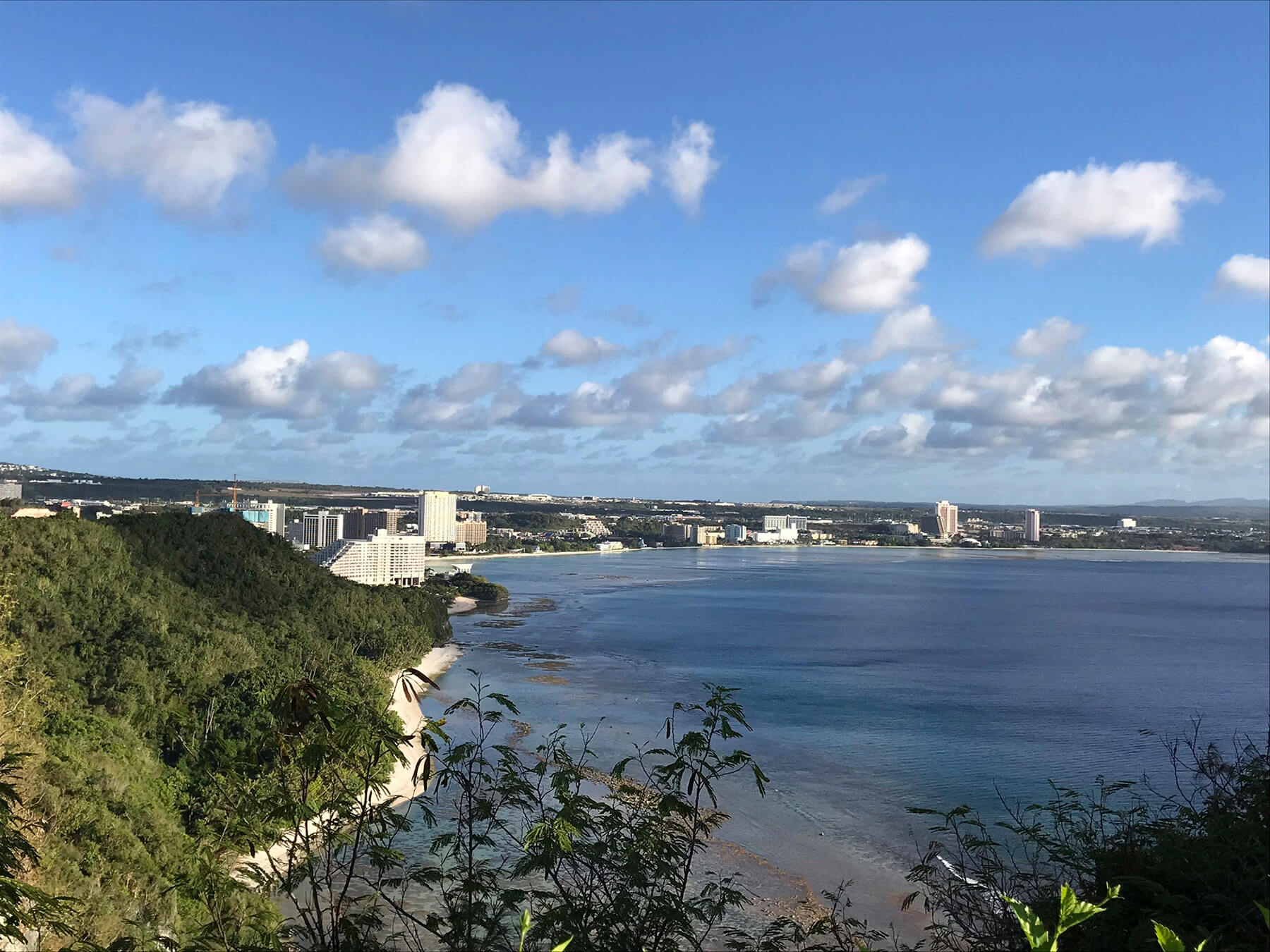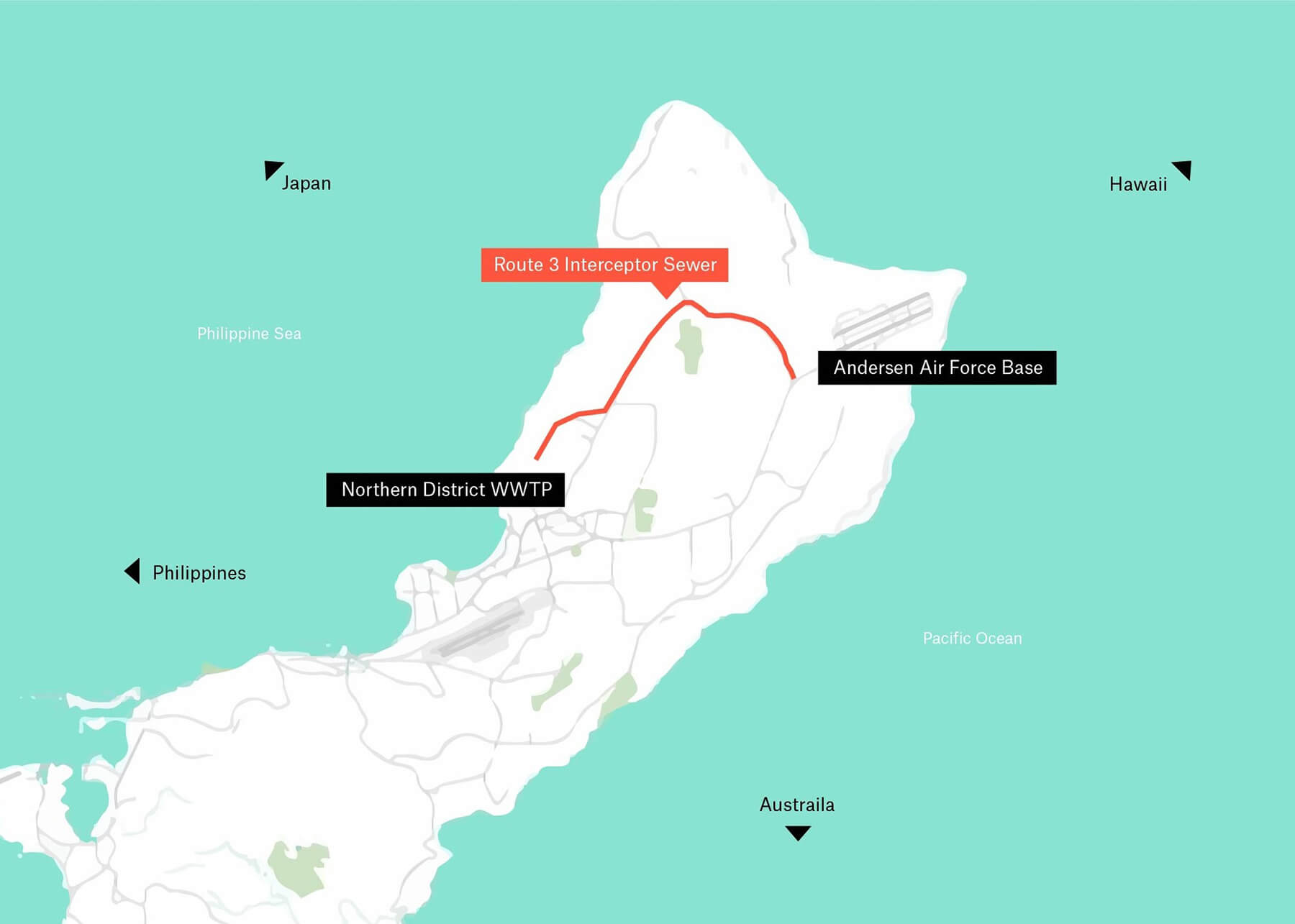
Pinpointing the Problem
The existing sewer infrastructure that serves the northern part of Guam, including Andersen Air Force Base (AAFB) and Finegayan, conveys wastewater to the Northern District Wastewater Treatment Plant. Constructed of Techite Reinforced Polymer Mortar Pipe and Asbestos Cement Pipe, both of which are known to have performance issues, the system was experiencing failures and blockages that were causing groundwater infiltration and inflow and ultimately compromising the integrity of the sewer line. Beginning in 2018, the Gresham Smith team used a topographic survey of the project area, geographic information system (GIS) data, closed-circuit television video and software-generated reports to pinpoint the problem and begin the design process.
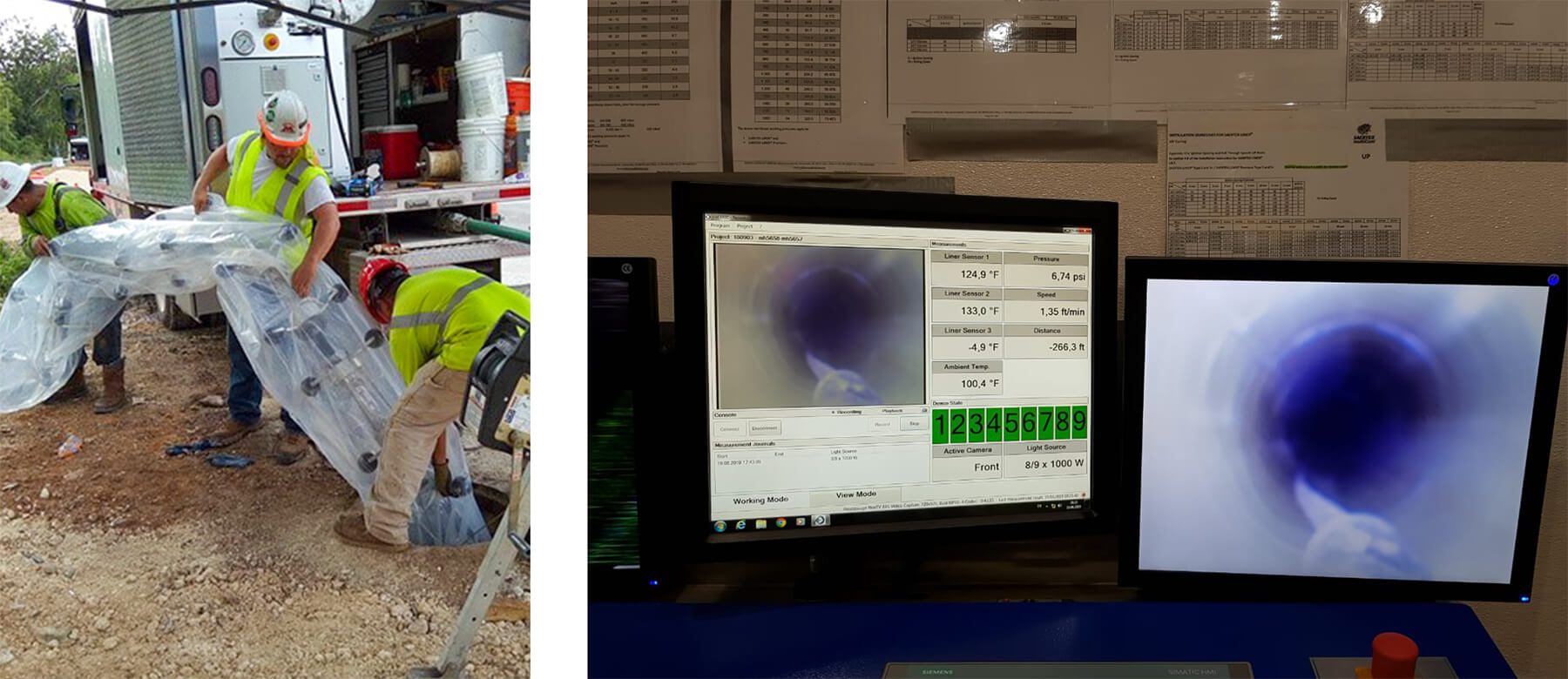
Overcoming the Climate with UV CIPP
GWA initially intended for the project to utilize conventional cured-in-place pipe (CIPP) for the sewer rehabilitation, but the island’s high heat and humidity prematurely activated the curing agent in the resin. Gresham Smith and the design-build team proposed an alternative technology—ultraviolet light cured-in-place pipe (UV CIPP). A less widely used method, UV CIPP involves pulling a glass reinforced plastic liner impregnated with resin into place in the existing sewer and inflating it with air before using a UV light train to cure the resin and form the cured-in-place pipe.
Since the liners couldn’t be impregnated on the island due to the remote location, they were stored in refrigerated, light-tight containers, and transported 15,000 nautical miles by container ship from Germany to Guam. Once on the island, the team had to keep the liners liner at a constant 60 to 70 degrees Fahrenheit—much cooler than Guam’s average temperature of 90 degrees Fahrenheit—and utilized a cold storage facility until each piece was ready to be installed.
The final design solution included epoxy coating the interior of 140 manholes and rehabilitating eight miles of 18- to 42-inch sewer lines using UV CIPP to restore the structural integrity of the sewer system, maintaining conveyance and protecting Guam’s groundwater supply.
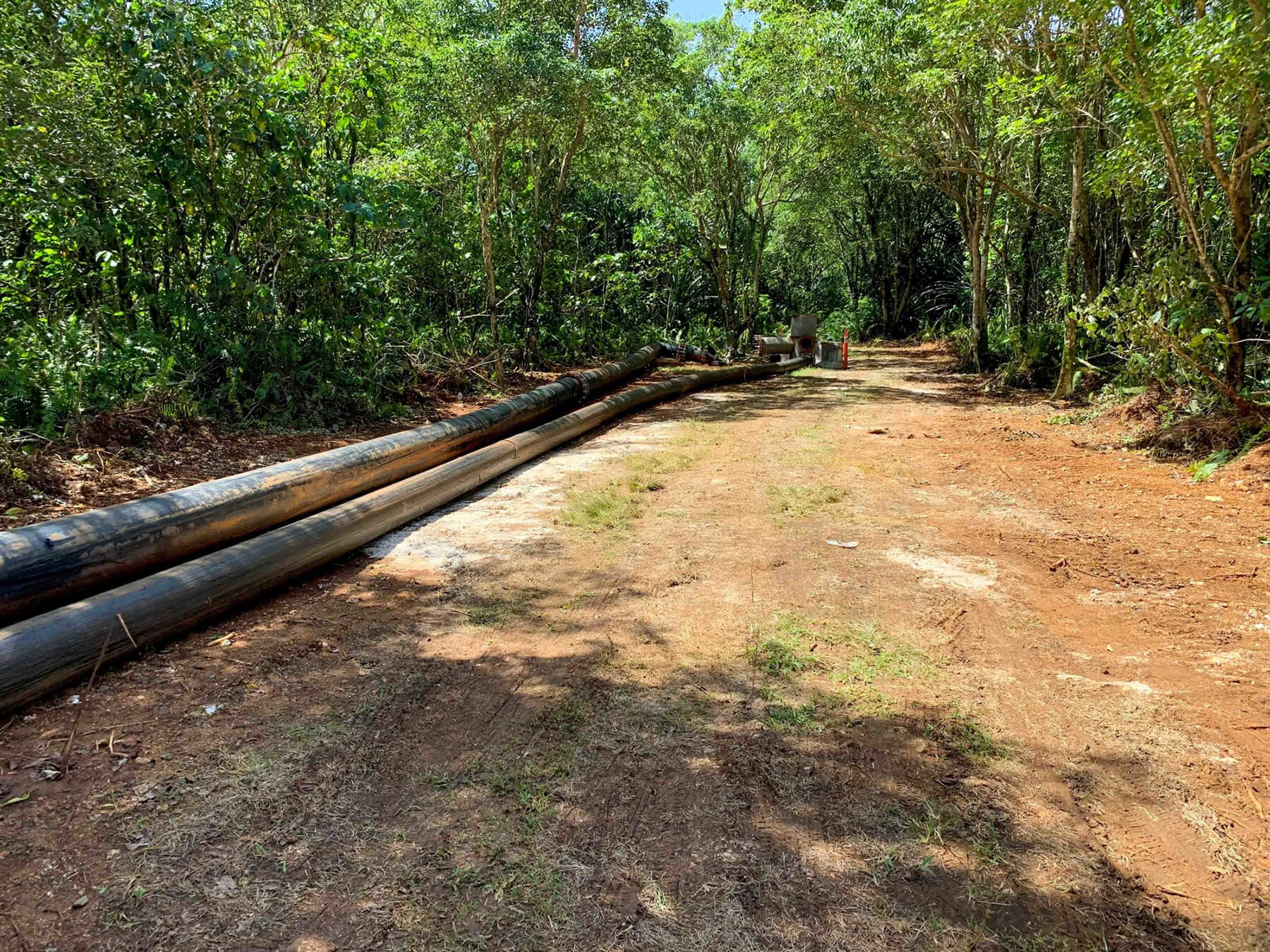
Location, Location, Location
The project’s location on the island also proved challenging. The project required substantial bypass pumping during the rehabilitation, but portions of the interceptor sewer traverse residential neighborhoods, a resort, and a narrow, curvy right of way. The project team configured the 17 bypass pumping set ups, each of which bypassed nearly half a mile of interceptor sewer, to reduce lane closures and interruptions to traffic flow and coordinated with a major highway project happening concurrently on the island to minimize disruption to residents and tourists.
The interceptor sewer also crosses through two large sections of jungle terrain, and the team had to steer clear of Guam’s overpopulated species of brown tree snakes, numbering around 2 million with densities of up to 13,000 per square mile. The team also had to protect the habitat of the Mariana Common Moorhen, an endangered species, and avoid disrupting Chamorro ancestral lands.
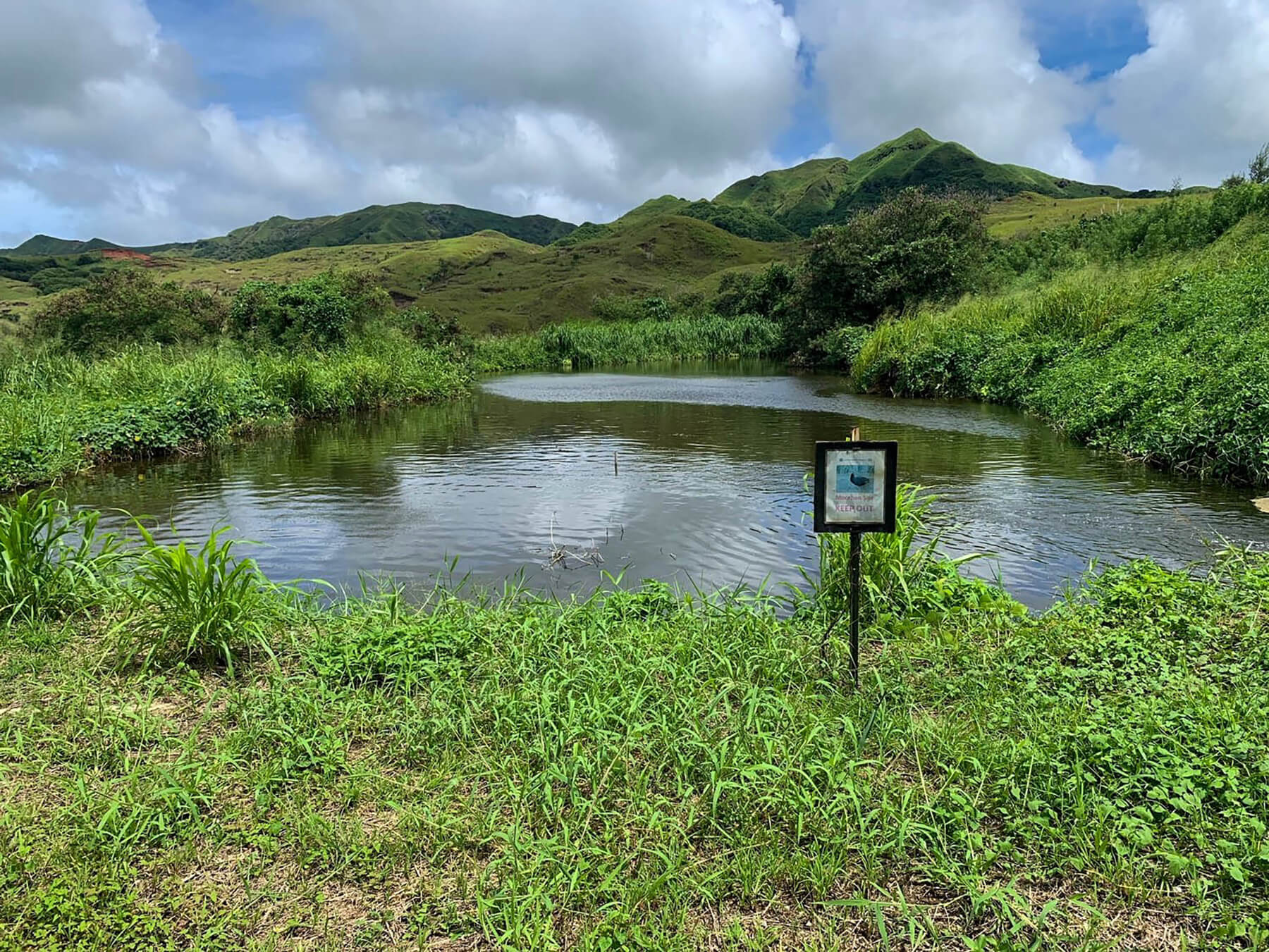
Protecting Potable Water
There are only two main sources of freshwater on the island of Guam: surface water from rivers and reservoirs on the south half of the island, and groundwater from the Northern Guam Lens Aquifer in the north. The island’s hot, humid climate means that up to 50% of total annual rainfall returns to the atmosphere by evaporation and transpiration and does not recharge the aquifer, making water one of the most important resources for keeping Guam’s communities healthy and thriving. By using UV CIPP on this project, GWA saved approximately 1.9 million gallons of potable water, while also minimizing the amount of pollutants released into the environment during the curing process.
